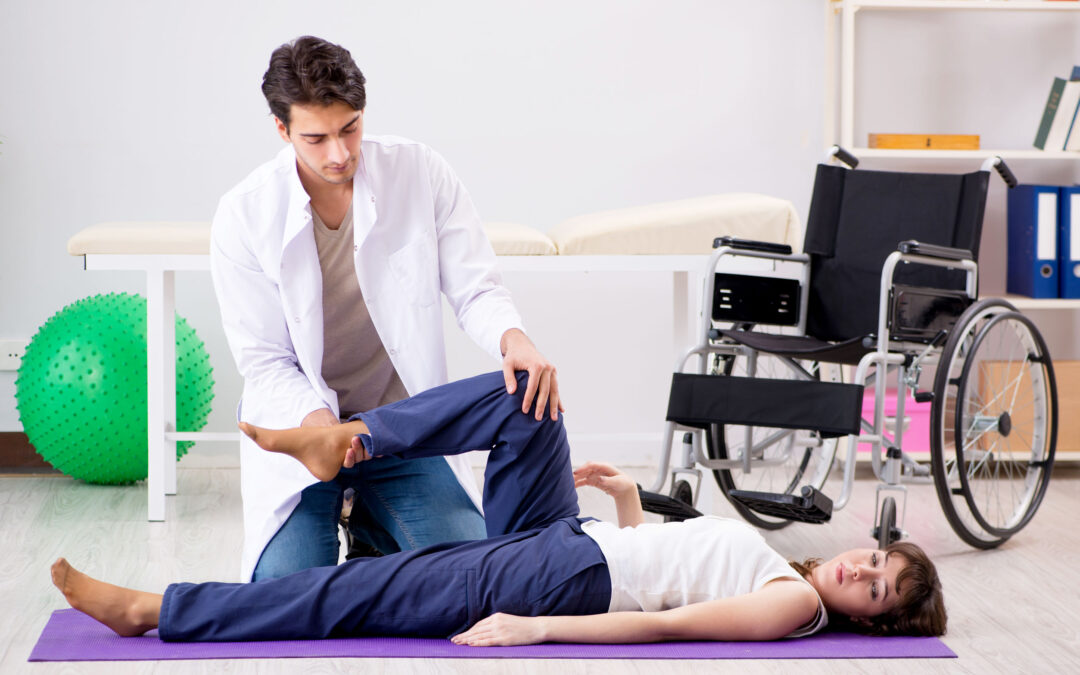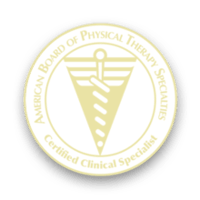COVID and Leg Weakness: What You Need To Know
Some people continue to struggle with the effects of the coronavirus disease (COVID-19) long after testing positive for it. From muscle weakness to brain fog, post-traumatic stress disorder, and more, COVID-related symptoms are sometimes a long game. Now, often times referred to as long COVID, are presenting with leg weakness and difficulty walking. In this article, we will review everything we know about long COVID and how physical therapy might be able to help.
Canadian Kim Ashbourne, for example, told CTVNews that her life has yet to return to normal almost a year after suffering from the China-born disease. Ashbourne tested positive for COVID in December 2019. Weeks after recovering, she was still grappling with effects that include difficulty in walking.
Today, almost a year after her sickness, Ashbourne still cannot return to her pre-COVID activities such as working and hiking. She’s still experiencing fatigue, general pain and discomfort, and other cardiac, neurological, pulmonary, and vascular complications.
Medical experts call it long COVID.
What Is Long COVID?
Long COVID or post-COVID conditions include a wide range of health problems, whether new, ongoing, or returning, that people continue to experience after they have seemingly recovered from the virus.
People have different COVID recovery schedules. Post-COVID conditions are when symptoms arise at least four weeks after the initial infection.
According to the Centers for Disease Control and Prevention (CDC), the following are the most common long COVID symptoms:
General
- Fatigue
- Fever
- Muscle weakness
- Post-exertional malaise
- Rashes
Digestive
- Diarrhea
- Stomach pain
Neurological
- Anxiety
- Brain fog
- Change in smell or taste
- Dizziness
- Headache
- Numbness
- Sleep issues
Cardiovascular and Respiratory
- Cough
- Chest pains
- Heart palpitations
- Shortness of breath
These are just some of the symptoms. COVID reports note that there were more than 200 symptoms reported by patients but the above-mentioned 18 are the most common.
According to the CDC, 30% of people who were hospitalized due to COVID experienced post-COVID conditions. About 13% reported long COVID symptoms at least a month after infection while 2.5% reported experiencing long COVID at least three months after testing positive for the disease.
Leg Weakness and COVID
There are several reasons why people may experience leg weakness long after infection.
COVID is mainly a respiratory illness. It is caused by the SARS-CoV-2 virus. SARS is an acronym for severe acute respiratory syndrome. People infected with the virus experience symptoms such as cough, stuffy or runny nose, headaches, fever, breathlessness, and muscle weakness.
Even before the discovery of COVID-19, respiratory issues have already been linked to muscle and joint pain that resulted in leg weakness. With COVID-19, inflammation in the body is often a result of infection from the virus. It could worsen muscle and joint issues.
Many people who have experienced long COVID also reported feeling leg weakness while trying to do physical activities such as hiking, jogging, and exercise.
COVID is still a fairly new disease and experts and researchers continue to study it in the hopes of learning the full picture.
Some studies identified three possible reasons why people who had COVID or have long COVID experience leg and muscle weakness. They theorized that those with acquired limb muscle weakness, myalgia, and Guillain-Barre syndrome are more prone to muscle and leg weakness.
Acquired Limb Muscle Weakness
A study published in the BMC Anesthesiology journal studied survivors who were confined in the ICU. The study encompassed two hospitals with at least 30 ICU beds. The goal was to discover the incidence of respiratory muscle weakness which is a common complaint among COVID survivors within the ICU setting.
According to the results, 69% of the ICU-admitted survivors experienced limb muscle weakness while 26% had both respiratory and leg muscle weakness. After a month, 44% of the survivors who reported weakness in their legs were unable to walk for more than 100 meters.
The local study shared similarities to other findings around the world. There was evidence that indicates: “Patients who undergo invasive ventilation in ICU have a high risk of developing respiratory and limb muscle weakness.” There was a 50% prevalence rate.
Expert physiotherapists recommend that COVID patients admitted to the ICU must have early physiotherapy to avoid ICU-acquired leg weakness.
Myalgia
Myalgia is the medical term for muscle pain. It isn’t one of the more common COVID symptoms. COVID has fever as its most common symptom, according to a study conducted in China, where the virus originated. Of the 55,000 COVID cases in China in February 2020, 87.9% had a fever while 67.7% had a dry cough. More than 38% experienced fatigue while 18.6% complained of shortness of breath. Only 14.8% reported muscle or joint pain.
While myalgia is not as common as other symptoms, it is often the most aggravating because it may lead to the loss of the ability to walk, albeit temporarily.
Muscle pain and weakness happen because viral infections, not limited to coronavirus, can cause the inflammation of the muscle tissue known as myositis.
COVID-related muscle pain is usually characterized by the tenderness of the muscle when touched or pain associated with its movements. It is often similar to exercised-induced muscle pain, medical experts said.
So, for people experiencing muscle pain even when they did not exert much physical effort, it may be an indication of COVID. Or, if someone has been infected with COVID before, then it might be an indication of long-COVID conditions.
Guillain-Barre Syndrome
There are also rare cases where people with COVID developed Guillain-Barre syndrome which is a serious nervous system disorder.
Among the most common symptoms of the disorder are muscle weakness, areflexia or absence of reflexes, and paresthesia or burning or prickling sensation. Other symptoms, although not as common, are facial weakness and ataxia or poor balance.
For those who experienced Guillain-Barre during COVID, the disorder usually appears within five to 10 days. The first signs are weakness in the legs, a tingling sensation, and facial weakness. As it worsens, all limbs weaken and can lead to paralysis.
It should be stressed that COVID-related Guillain-Barre syndrome is rare. A study of three hospitals in Pavia, Italy recorded 1,200 COVID patients over three weeks. Of the number, only five patients experienced Guillain-Barre Syndrome, or about 0.4%. The patients received immune globulin therapy to boost their immune response to the coronavirus and not necessarily for the disorder.
Can Physical Therapy Help Long COVID Leg Weakness?
For those who are experiencing leg weakness following a COVID infection, physical therapy can be beneficial. A physical therapist will measure your strength, endurance, activity tolerance, balance and movement quality. After establishing a good baseline of function and movement, you will be provided with a customized program that might include one or several of the following:
- Progressive strengthening program
- Gradual increase in endurance activities: this should be monitored as overdoing might cause setbacks and not progressing enough also has its drawbacks
- Balance retraining: Balance problems can occur either due to prolonged time in bed, leg weakness, or both. Physical therapists are the experts in balance retraining.
- Emotional support: Some people might experience anxiety or fear of returning to activity. Physical therapists are aware of this reality and provide strategies to cope with these emotions.
- Pain management: pain can be an added challenge during recovery. Physical therapists are trained in pain management strategies.
Conclusion
It’s been close to three years since the novel coronavirus was discovered in Wuhan, China at the end of 2019. The virus is still around and the world is forced to adapt to the new normal of trying to go back to pre-COVID life.
Every coronavirus infection is also a lesson for medical experts who are striving to get more data about symptoms and how to combat them. Fever, coughing, and sneezing used to be the most common symptoms of COVID but now experts are learning so much more about COVID’s link to leg and muscle weakness which could improve future treatments for those who experience it.



